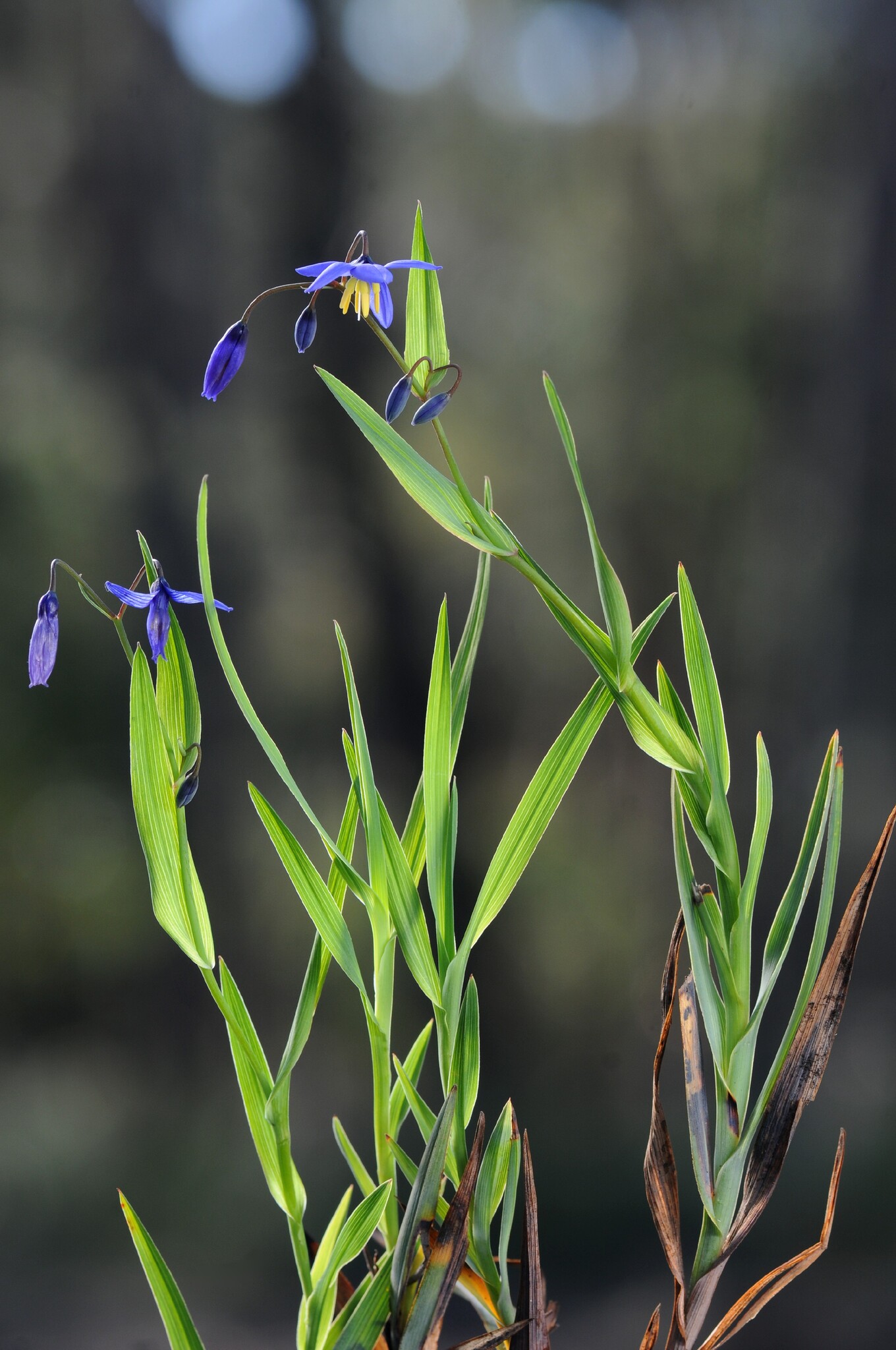
Greek stype – flax fibres, andro – a man, referring to the staminal filament hairs.
Perennial, clump-forming more or less woody shrub. Stems erect, branching, perennial. Leaves numerous, 2 ranked, linear-lanceolate, leaf bases sheathing, not flattened basally. Flowers lasting one day, spreading or nodding, radially symmetrical, not twisting after flowering, stalked, individual flower stalks articulated. Inflorescence a terminal cymose panicle. Tepals 3+3, free. Stamens 6, free, filaments hairy. Ovary superior. Fruit an irregular fleshy capsule. Seeds ovoid, black, without arils.
Grown for the formal leaves and mostly clear blue flowers.
At least 2 species, one of which is extremely variable and widespread across southern Australia and possibly in New Caledonia.
Branched stems, with sheathing leaves with unflattened bases; hairy filaments; irregular fleshy capsules.
Hopper (1999).
Source: (2005). Hemerocallidaceae. In: . Horticultural Flora of South-eastern Australia. Volume 5. Flowering plants. Monocotyledons. The identification of garden and cultivated plants. University of New South Wales Press.
